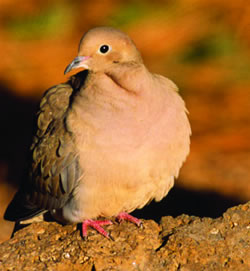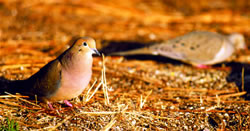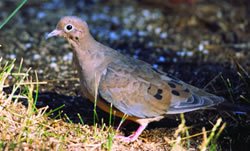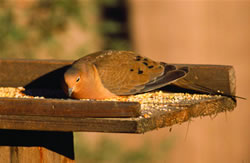Charles
Lucien Bonaparte (1803-1857) was a nephew of Emperor
Napoleon Bonaparte. His father, Lucien, was Napoleon’s
younger brother. Lucien Bonaparte was a strong supporter
of the French republic and an opponent of the Empire – not
a favorable position considering his brother’s
desire to rule the world.
 Lucien moved his family to Italy, seeking protection
from the Pope. Son Charles spent his childhood in Rome,
but when the family tried to emigrate to the United States,
they were captured by the British and held as “celebrated
captives” in England for four years. In England,
Charles received an excellent education; his favorite
subject was natural history. Lucien moved his family to Italy, seeking protection
from the Pope. Son Charles spent his childhood in Rome,
but when the family tried to emigrate to the United States,
they were captured by the British and held as “celebrated
captives” in England for four years. In England,
Charles received an excellent education; his favorite
subject was natural history.
He married his first cousin Princess Zénaïde
Charlotte Julie Bonaparte, and in 1822 they joined Uncle
Joseph Bonaparte in exile in New Jersey.
Charles was an ornithologist, not a “birder” since
that label had yet to be invented. During his exile,
the Frenchman studied the birds of the New World. He
worked on updating a publication called American Ornithology
that Alexander Wilson had written some years before.
Bonaparte spent time with another Frenchman and ornithologist
who was pretty much an unknown at that time, but whose
name would become synonymous with bird conservation – John
James Audubon.
During his stay in America, Bonaparte traveled to the
Rocky Mountains and in the eastern states. One species
that he described for science was the mourning dove or
Zenaida macroura named after his wife. Macroura means “long-tailed” which
defines the dove’s tail.
The plaintive-sounding ooAAH-cooo-coo-coo of the mourning
dove is one of the classic canyon sounds. Early naturalists
thought the song “mournful” with its deeply
whistled notes rising then falling in pitch. We now know
better that this anthropomorphic view is incorrect. These
birds do not mourn for lost souls – their beautiful
songs are for breeding and territorial displays.
 Mourning
doves are medium-sized passerines averaging
one foot long and have an 18” wingspan.
About a third of the bird is tail; the long
pointed, grayish tail feathers sport a thin
black border and a white edge. A dove’s
upperside is more uniformly gray than the undersides,
and the wings have black spots on their outer
portion. On the upper breast and neck there
is a pink iridescent tinge. The small head
sports a pale bluish orbital ring; one Southwest
folktale suggests that the birds paint their
faces to attract a mate. Mourning
doves are medium-sized passerines averaging
one foot long and have an 18” wingspan.
About a third of the bird is tail; the long
pointed, grayish tail feathers sport a thin
black border and a white edge. A dove’s
upperside is more uniformly gray than the undersides,
and the wings have black spots on their outer
portion. On the upper breast and neck there
is a pink iridescent tinge. The small head
sports a pale bluish orbital ring; one Southwest
folktale suggests that the birds paint their
faces to attract a mate.
During lift-off, the wings produce a distinctive whistling
sound and the birds flap vigorously to become airborne.
Their rapid flight and long tail enables them to navigate
in tight places or to elude predators. But for all their
speed and agility, Mourning doves still fall prey to
hawks, falcons and hunters in season.
 Their
range is across the continental United States,
into portions of Canada and Mexico, and south
to Panama. In Moab, birds are present throughout
most of the year, but leave during winter.
Seeing a mourning dove on the Christmas Bird
Count is a rarity, even though the birds are
often present year-round in Grand Junction. Their
range is across the continental United States,
into portions of Canada and Mexico, and south
to Panama. In Moab, birds are present throughout
most of the year, but leave during winter.
Seeing a mourning dove on the Christmas Bird
Count is a rarity, even though the birds are
often present year-round in Grand Junction.
Mourning doves hold a special place in mythology and
folklore. Noah sent a dove in search of land and when
it returned with an olive branch he knew the flood was
subsiding. But to me, the dove represents something more
personal. Charles Bonaparte exiled from his homeland,
becomes the father of American ornithology and an expert
on mammals, amphibians, reptiles and fish. His biography,
written by Patricia Tyson Stroud is entitled The Emperor
of Nature, a sharp contrast to his Uncle Napoleon’s
title. Charles Lucien Bonaparte is proof that one can
thrive wherever they live, no matter how badly they miss
their native soil.

|